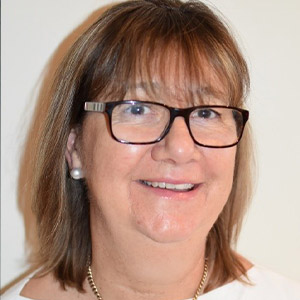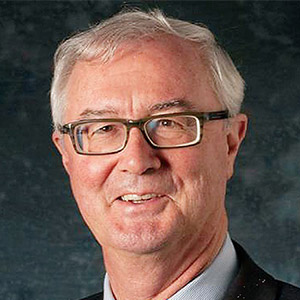Value & Access
Universal Healthcare in Asia: HTA and Real-World Data Overcoming Barriers

Value of Medicines and Affordable Access: Global Dilemma, Local Debates



The World Health Organization’s (WHO) definition of universal healthcare (UHC) embodies three related objectives:
1.
Equity in access to health services: Everyone who needs services should get them, not only those who can pay for them
2.
The quality of health services should be good enough to improve the health of those receiving services
3.
People should be protected against financial risk, ensuring that the cost of using services does not put people at risk of financial harm.
In November 2017, the 5th HTAi Asia Policy Forum (the Forum) met in Beijing to discuss the barriers and challenges of implementing UHC in Asia. In particular, the Forum discussed the role that health technology assessment (HTA) can play in achieving UHC and the need for real-world data (RWD) to inform the HTA process. Invitees included HTAi leadership, senior public officials from the National Health and Family Planning Commission of the People’s Republic of China, global and regional representatives from the WHO, plus leaders from public sector HTA agencies and senior representatives from pharmaceutical and medical device companies active in the region.
One of the Forum’s key messages was that the benefits of achieving UHC are not limited to just health but can translate to efficiency gains, as good health improves educational outcomes and workforce productivity, and, over the long run, promotes economic development. However, we also know that healthcare systems in Asia are experiencing huge pressures exerted in part by increasing urbanization and aging populations, which have shifted healthcare needs from acute disease to the looming epidemic of chronic non-communicable disease. Health systems in the region are striving to achieve UHC and must strike a balance in the provision of, and access to, essential healthcare services. Doing so will reduce both health inequalities and out-of-pocket expenditures.
What tools will help us find this balance? HTA has been identified as one priority-setting tool. However, as discussed at the Forum, HTA in the Asia region must continue to develop in parallel with healthcare systems, balancing the requirements of HTA with available healthcare budgets. Although HTA ultimately aims to improve timely access to technology, it is increasingly being seen in Asia as a cost-containment tool or gatekeeper instead of a means to deliver appropriate care to the appropriate patient. As a result, increasing use of HTA in the region is driven in part by policy-makers’ affordability concerns and by the need to implement financially sustainable UHC, which is leading to inconsistent application of HTA throughout the region. Forum members recommended a call to action to develop a standardized, transparent HTA methodology to prioritize technologies to be added to healthcare benefit packages in Asia.
Additional Conclusions
Forum members concluded that countries in the region must first define their healthcare priorities, then identify technologies that address these priorities, before conducting HTA. It follows that HTA should be used to prioritize and evaluate all technologies or services in a pathway of care, rather than focusing on individual technologies in isolation. This is likely to be of greater value to countries in Asia, especially given the complexity and status of their respective healthcare and political systems, availability of resources, and HTA capacity. Incremental cost-effectiveness ratios should not be used as the sole decision-making criteria in benefit package determinations; Asian social values and context must also be taken into consideration, including patient experiences (not just outcomes) from the region. Forum members noted that educating patient groups is critical, with a need to find an “Asian way forward” that considers cultural issues while engaging patients.
Forum participants identified a number of barriers to achieving UHC and using evidence-based assessments, including affordability, lack of political will, and cultural deference to expert opinion. A recurring discussion theme was the lack of collaboration and trust between agencies and industry in Asia, and limited HTA process transparency and accountability. A first step to improve transparency and accountability could be publishing all stages of HTA reports (intent to assess, protocol, draft assessment) online with adequate time allowed for feedback from patient groups, clinicians, industry, and related stakeholders. Poor quality observational evidence makes investment decisions difficult; collaboration between public and private sectors (such as increased dialogue leading to identifying systems or technologies that work in other countries, or establishing patient registries) is required to overcome this challenge.
The disconnect between what RWD the public sector HTA agencies and industry have knowledge of and use when making HTA decision in Asia was also of interest. Industry is uncertain as to what data HTA agencies in the Asia region require to support decision-making and was not aware of the extent to which RWD (primarily administrative insurance claims) are being used to inform HTA decisions. It also became clear that these public sector agencies would like greater access to industry’s patient-level clinical trial data to inform decision-making. Asian countries tend to have a conservative approach to privacy, legal, ethical, and custodial concerns around public health database linkage and RWD access. There is a clear need for government, agencies, and industry to develop a code of ethics and guidelines in relation to the collection, access, and use, of data. Forum members proposed that a catalogue of all available, accessible public data be developed for all countries across the region.
In conclusion, HTA and access to RWD were identified as having great potential to contribute to the goal of achieving UHC and that this goal is should indeed be pursued in Asia. However, issues such as transparency and accountability of HTA, and trust and collaboration between the public and private sectors, remain important concerns. A detailed summary of these discussion and issues, plus recommendations for actions, will be made available in a white paper to be published on the HTAi website.
References available upon request.
About the Authors

Linda Mundy serves HealthPACT, Healthcare Improvement Unit, Clinical Excellence Division of Queensland Health. After completing her MPH, she began conducting systematic reviews but, since 2003, has conducted horizon scanning on behalf of HealthPACT, to proactively identify new and emerging technologies that may impact on the public health systems of Australia and New Zealand.

Rebecca Trowman is the HTAi Policy Forum and Interest Group Manager and coordinates the HTAi Policy Forum series. She has formal training and 15 years of experience in the development and implementation of health policy and HTA in the Australian Government, academia, and at the National Institute for Health and Care Excellence (NICE) in the UK.

Professor Brendon Kearney is Chair, HTAi Asia Policy Forum (2017 – 2019). He is a Clinical Professor in the Faculty of Medicine, University of Adelaide, and a Consultant in the Haematology Unit of the Royal Adelaide Hospital Cancer Service. He is the past and present Chair of numerous committees including the Health Policy Advisory Committee on Technology (HealthPACT), the Medical Services Advisory Committee (MSAC), EuroScan International and is a current Board member of HTAsiaLink.

